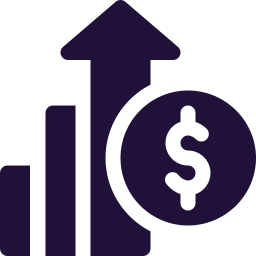Just like you can take out a mortgage to buy a house, you can use premium finance to buy permanent life insurance.
In this article, we will learn more about what premium financing is, how it works, who can benefit from it, and the risks involved.
This article is written as general education, and should not be considered as personal financial advice. If you would like personal guidance with life insurance, you can schedule a time to talk with one of our experts.
What is Premium Finance?
Premium finance is an arrangement where policies for big insurance policies are paid by loans from a third party, which are partly or fully secured by the cash value in the policy.
Generally, policyowners use premium finance to acquire large policies with a lower cash outlay, and eventually either pay back the loan, or refinance it, or replace it with a loan from the issuing life insurance company.
Just like all forms of leverage, premium finance does provide a benefit, but also imposes risks, and is not suitable or available for everyone.
The Benefits of Premium Finance
In a well designed premium finance arrangement, there will be a positive spread between the interest on the loan and the return of the cash value in the policy.
This means, in essence, that the loan will pay itself back, as the policy that it is financing is yielding more than the loan costs.
In a well designed arrangement like this, premium finance will create a profit for the borrower similar to buying a house with a mortgage, renting it out, and paying back the loan with the proceeds while keeping a profit.
As the policyowner has to put out less cash for a bigger policy, the return on cash invested on a well designed arrangement like this will be higher than if no loans were used, and the policyowner will be able to keep more money elsewhere.
As the name of the game with permanent life insurance is compounded returns, premium finance helps with this objective by allowing the policyowner to build up larger amounts of cash value in the early years, which can then compound over time.
Beyond the cash value aspect, premium finance could also help policyowners acquire life insurance coverage that would otherwise have been prohibitively expensive.
For example, instead of paying premiums for a term life insurance policy (which most people never end up getting any benefit for), premium finance can allow high-income earners to instead get a permanent life insurance policy which can provide the coverage they need in addition to cash values that can be used to for example supplement retirement income.
For families that are asset rich and cash poor, with a large part of their wealth tied up in illiquid assets like private companies or real estate, premium finance can similarly help provide the life insurance coverage needed without requiring as much cash outlay.
While premium finance started 25 years ago mainly as a method for personal financial planning, it is now also commonly used by businesses to get the benefits of permanent life insurance with a lower cash outlay.
Some of the ways that businesses use premium finance are to provide retirement benefits to executives, to protect the business from the loss of a key employee, or to fund a so called buy-sell agreement which allows the business to buy out the heirs of a deceased owner.
In essence, while premium finance comes with restrictions and risks, which we will explore later, it offers these benefits:
- Lower cash outlay for a larger life insurance policy
- Increase compounded returns and IRR from permanent life insurance
- The ability to keep your money invested somewhere else
- An opportunity to profit from a difference in interest rates and policy returns
Who Could or Should Do Premium Financing?
While normal policy loans, which use pre-existing cash value in a policy as a security for a loan are available to anyone, premium finance, which uses loans to pay for premiums that build cash value, is only available to higher net worth individuals and businesses.
While exact minimum requirements for eligibility varies, premium financing lenders generally require a six figure salary and a seven figure net worth.
While normal policy loans from insurers do not rely on credit checks, premium financing from external lenders does, so a good personal or business credit score is essential to get good results.
Additionally, while premium finance can generally be done to insure people as old as 70, it usually provides the best result when used to insure younger and healthier people, as these policies build cash value quicker.
Further, premium financing will without being paid back lock up a large part of the cash value in the policy, which will make less money available for future policy loans.
If you already have highly productive investments outside of the policy where you can make significant returns, premium finance allows you to keep your assets in those investments and use loans to build life insurance holdings.
If you, however, don't have highly productive investments, or want to keep some liquidity in your policy available for future investment opportunities, it might be more beneficial to pay for premiums out of pocket and then take out loans secured by the cash value at a later date, when you need it for a future investment.
Whether you take loans secured by your cash value that is issued at the onset of the policy (premium finance) or once the policy has already built some cash value (normal policy loans), it will always yield the best results when the loan amount can be kept in an investment where the returns reliably overperforms the interest rate of the loan.
Additionally, premium finance might not be the best strategy for someone who is looking to minimize risk with life insurance.
As with any leverage, potential benefits will come at the expense of additional risk, which we will cover in a later section of this article.
How Does it Work?
Generally, whole life or indexed life insurance policies are used for premium finance, as they both have minimum guarantees which keeps them more secure for the lenders.
When one or several permanent life insurance policies are identified, and stress tested through financial modeling, the policies are applied for concurrently with the premium finance loans.
Even though the policies used for premium financing are designed for max allowable cash value accumulation, the cash value is usually lower than the loan in the first years.
Because of this reason, borrowers will generally have to post additional collateral from their other investments, or, in some cases, pay the first few premiums themselves and then initiate the premium finance fully secured by the policy.
Once the lending agreement is in place, the lender will cover the premium payments, which are generally paid up over 4-7 years.
During this time, the borrower usually pays interest only payments on the loan, which are most commonly variable, but can also be fixed.
In other, more aggressive setups, the borrower might make no loan payments, and instead let the loan balance grow in expectation of having the cash value outgrow the loan balance.

Usually, premium finance loans have a limited term of 5-10 years, at which point the policyowner will need to refinance the loan.
This can be done with the same premium finance lender as the initial loan, with another premium finance lender, or with the issuing life insurance company, if the cash value is high enough.
The most common end goal of a premium financing arrangement is to replace the external loan with a loan from the insurer, which can be either fixed, or with an upper limit, which decreases the risk of the financing.
Replacing the external premium financing loan with a loan from the insurer will provide the borrower with a loan without a term that can last for life, and does not require ongoing payments, unlike many premium finance loans.
If done right, a premium finance arrangement will over time build up cash value above and beyond the loan balance, which the policy owner can use to for example finance other investments or supplement retirement income.
When the insured person dies, the money paid out will first pay off any outstanding debt with the life insurance company or the premium finance lender before being paid to the beneficiaries.
Risks of Premium Finance
As with any leverage, premium finance can be a double edged sword, and there are several risks associated with it that don't exist with normal life insurance.
Lender & Refinancing Risk
Usually, premium finance arrangements have an initial loan term of 5-10 years, which is then meant to be refinanced until year 11-20 before being replaced by a loan from the insurer.
Because of this, there is a risk, since the premium financing loan usually needs to be refinanced at least once prior to being replaced by a loan from the insurer.
Although the risk is not high in most cases, there is a risk that the lender could choose to not refinance the loans if the credit score of the borrower or the life insurer worsens.
However, as premium finance has become more common in the last 20 years, there are now quite a few alternative premium financing lenders, and chances are that if you get declined to refinance with one you could be approved to refinance with another.
Loan interest risk
As with mortgages, it has generally been the most favorable for borrowers in premium finance to do variable rate than fixed rate loans over the past 20 years.
The variable rate will generally be based on a loan benchmark, such as LIBOR, plus an additional percentage, with some minimum rate.
Because interest rates tend to change over time, there is a risk that the interest rate will increase to the point where it is higher than the growth rate on the cash value, and the premium financing will start producing a loss.
While it is possible to get a fixed rate premium finance loan, the fixed rate is usually higher, and with the risk of increasing interest rate not being very high, the fixed rate is generally not worth the extra cost.
With the global economy taking on ever more debt, and printing ever more money, it is highly unlikely that interest rates will increase significantly over the long term.
For many decades, interest rates have been trending down, and in the light of current economic developments that trend is expected to continue.
Furthermore, while increasing interest rates would increase the cost of the premium finance loan, it is also likely that it would increase the dividends on a permanent life policy.
This is because, particularly with whole life policies, the dividends are connected to the general interest rate environment in the world, and if these increase, the yields of the insurer will generally also increase.
Collateral risk
Any premium finance deal can have two different sorts of collateral - the cash value in the life insurance policy, and outside collateral like stocks, bonds, and real estate.
With this collateral, there is the risk that it declines in value, or doesn’t perform as expected, which could cause the lender to ask for the borrower to post more collateral.
For whole life insurance policies, this is not a big risk, since it has strong guarantees both on policy charges and cash value growth.
For indexed life insurance policies, however, the risk is bigger, since it has weaker guarantees and could in the future get higher policy charges as well as a lower than expected cash value growth, if the market isn’t performing a certain year.
To protect against the collateral risk of the policy in a premium financing arrangement, one thing that could be done is to spread the premium finance loan over several policies, of different types, and from different insurers.
By doing a premium financing arrangement with several policies, a borrower can decrease risks specific to one life insurance company, and get a diversified exposure to both the often higher returns of indexed life policies as well as the more stable returns of whole life policies.
Beyond that, you can protect yourself from the risk by getting help from the expert team behind the digital permanent life platform at White Swan to help you design a plan for optimal performance that has been stress tested for stability.
Beyond the collateral risk of the policy, there is a potentially higher collateral risk for any outside collateral, such as stocks, bonds, or real estate.
During times of economic decline in the markets, like at the onset of the pandemic, lenders could ask their borrowers to provide them with recent statements of the value of their assets, and ask them to post more collateral if this value is too low.
If you have more collateral in your portfolio to post in a time like this, you are fine, but if you don’t, there is a risk that the premium financing deal could fall apart.
To handle this risk, it is important to manage your risks and leverage in your portfolio in general.
For a better understanding of a good way to do this, you can read our article The Antifragile Portfolio: How to Protect Yourself From Losses Without Sacrificing Returns.
Another way to handle it is to execute the premium finance arrangement in such a way that no outside collateral is required, by for example paying the first premium(s) out of your pocket and then doing premium finance loans fully secured by the policy.
Conclusion
Premium finance works like a mortgage to finance premiums for large insurance policies, and can help people acquire more life insurance for a smaller cash outlay.
Its benefits include the ability to make better returns on cash invested, and keep more money invested elsewhere upfront.
It does however come with a few restrictions, and is generally only available to high net worth individuals.
Additionally, it has quite a few moving parts and additional risks such as interest rate risk, collateral risk, and refinancing risk.
While premium financing might not be something for everyone, it can help affluent individuals and businesses achieve better results - if implemented properly.
Our experts at White Swan are experienced in setting up premium financing arrangements, and can help you with anything from case design to application and ongoing maintenance, all accompanied by a smooth digital platform.
.png)




.png)



.png)


.png)









.png)
.png)
.png)



.png)


.png)
%20copy.png)
%202.png)




.png)
.png)
.png)